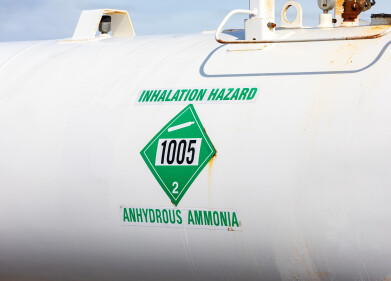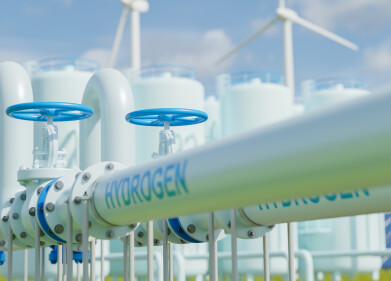Hydrogen fuel
COP 27: Success or Failure?
Nov 23 2022
As the dust settles on this year’s Conference of the Parties to the United Nations Framework Convention on Climate Change, or COP, many commentators have leapt at the opportunity to pass judgement on its resulting agreement – rightly so, of course, given that these provisions have the power to determine the fates of so many people, communities and ecosystems. The verdict, by and large, has been that COP 27 was an ambivalent omen, stirring hope with shining achievements in fairness and reparation whilst drastically turning up the pressure when it comes to meeting all-important temperature targets. At once the heralding of a new, more socially conscious era in climate policy and a sad reassertion of the disastrous status quo, then?
Let’s find out a little more about the specifics of this year’s agreement, first.
Fair Cop?
It’s been more than four years since a COP was hosted by an African nation. Generally, the events are hosted in developed nations and most poignantly, almost never in those countries on the front-line of climate catastrophe. But in keeping with its location, COP 27 was uniquely focussed on issues of culpability and responsibility, exploring the obligations that polluting economies might have towards more vulnerable economies. Indeed, this is the tragedy of the climate crisis: the most responsible are also the least exposed to climate change’s most destructive effects – and the world’s biggest polluters tend to have higher GDPs than the more at-risk economies, making it all the more likely that richer regions will be asked to pitch in.
Part of the problem is accountability, of course. The Global North may commit to financial aid on paper but using the dark arts of accountancy, may shirk on their responsibilities in practice, leaving the situation unrectified and eroding trust. Already, many in the Global South reserve the right to scepticism regarding the Global North’s commitment to redistributive projects – and for good reason, given the failure on the part of the developed world to supply USD100 billion to vulnerable regions countries, which was an article of 2015’s Paris Agreement. When doors opened last year in Glasgow for COP 26, the ledger displayed a shortfall of USD15 billion, a glaring dereliction of duty. But to add insult to injury, Oxfam have suggested that these official figures are the result of fraudulent accountancy practices that, when rectified, put the value of the deficit at over USD40 billion.
In recognition of this dire situation, the Glasgow agreement expressed “deep regret.” To many, this was a pathetically weak response. In Sharm el-Sheikh, however, the agreement backs up its “serious concern” with this deficit and “urges developed country Parties to meet the goal.” In addition, there is a re-commitment of Glasgow’s agreement to double the finance available for adaptation, vastly increasing the capacity of vulnerable economies to raise roads above sea-level rises, protect themselves against hurricanes by restoring wetlands and coral reefs, and build infrastructure capable of withstanding extreme heat.
But the crowning achievement of COP 27 with regard to fairness and equity is an historic agreement to establish so-called loss and damage compensation. Such a scheme would provide funds to repair damaged infrastructure and sites of cultural significance, as well as simple compensation for any irrevocable losses. This is only the beginning of a long road to implementation, though. At the moment, the text only legislates for the establishment of a committee, staffed by delegates from 24 signatory-nations, that will draw up a plan for the fund to be presented at next year’s Conference in the United Arab Emirates. This means, of course, that the many sticky issues of how much money the fund will manage, who will be responsible for supplying this capital, and what sorts of losses and damage qualify for compensation – all of these inevitably divisive issues are yet to be ironed out. So: a big win for climate justice, but not an unequivocal one.
Further blows to COP 27’s credibility on fairness came from reports that there was a significant number of lobbyists for the fossil fuel industries at the meeting. According to some reports, there were over 600 delegates with ties to fossil fuel, up by a quarter from COP26, and much attention was paid to the fact that such a turn-out would have outnumbered the delegates from ten nations most effected by climate change, including Pakistan, Bangladesh, and Mozambique. For many, this was a highly disappointing development, especially after COP 26’s attempts to diminish the industry’s influence. Again, it’s one step forward, two steps back.
Not-Zero
It’s fair to say, however, that this increased presence might have been less criticised had the Conference’s final agreement included a more ambitious position on fossil fuels. In fact, the agreement is the very opposite of ambitious on the issue - and despite all of the promising noises made in support of fairness, this lack of ambition betrays a startling indifference to missing the critical 1.5°C target, spelling disaster for all of those vulnerable regions that the Conference was otherwise so keen to protect.
In Glasgow, many delegates seemed uniquely cognisant of both the urgency of the climate crisis and the inadequacy of the measures to which many Parties were committed. If we’re to keep temperatures below 1.5°C through to the end of the decade, peer-reviewed estimates suggest that global emissions of greenhouse gases need to be cut by 43% and that emissions should peak by 2025. That’s important to remember: despite non-stop calls from every quarter for decarbonisation, emissions in 2022 were at record-levels, with carbon emissions from fossil fuel at their highest ever (36.6 billion tonnes). In an attempt to turn this situation around, last year’s agreement required signatories to “revisit and strengthen” their targets for 2030 in time for this year’s meeting. It was hoped that COP 27 would fire the starting gun for the race to decarbonisation as we entered perhaps the most critical decade of the climate crisis.
According to analysts, though, those “revisited” and “strengthened” plans that were submitted before this year’s meeting would, all in all, take less than 1% off projected global emissions by 2030. As a tacit endorsement of such targets, the text of the final agreement enshrines no commitment to decarbonisation. Despite the best attempts of a coalition led by India and the EU for harsher language, countries are only committed to “accelerating efforts towards the phasedown of unabated coal power and phase-out of inefficient fossil fuel subsidies.” All other fossil fuels, it seems, are off-the-hook. No starting gun, then. Just another false start.
Even excepting the presence of the fossil fuel lobby, this is unsurprising, as many Parties remain obstinately wedded to oil and gas. A coalition of African nations lobbied against any commitment to the phasing down of fossil fuels on the grounds that electricity-poor regions with untapped reserves of natural gas be permitted to use them. The President of the African Development Bank, Akinwumi Adesina, was quoted by Reuters as having indicated that any deal at COP 27 should reflect the right of African countries to develop their reserves. Of course, this would have come as more than welcome news to international gas firms. Most ominously, though, Sheikh Mohammed bin Zayed al-Nahyan, the President of the United Arab Emirates, said that the nation will continue to deliver oil and gas “for as long as the world is in need.” Next year, the United Arab Emirates will host COP 28.
It won’t do, however, to paint a monochromatic picture. There was at least one streak of hopeful colour when it came to decarbonisation: its name was Luiz Inácio Lula da Silva, the newly re-elected President of Brazil. Last year, the Amazon rainforest, one of the world’s most important carbon-sinks, became a net-emitter of carbon dioxide, producing approximately 1 billion tonnes in a year, as a result of experiencing a fourteen-year high in forest fires, some of which were deliberately ignited in order to clear space for beef and soy production. It was emblematic of President Jair Bolsonaro’s indifference towards the deforestation of the Amazon, borne out of an impatience with the region’s indigenous communities and a frustration with Brazil’s lacklustre economic performance. During his premiership, for instance, new mining operations in the Amazon hit twelve-year highs.
By contrast, Lula ran on a programme of reforestation and indigenous rights. At COP 27, Lula re-opened talks with Germany and Norway regarding an Amazon fund before publicising a long-negotiated partnership with Indonesia and the Democratic Republic of Congo for the preservation of critical forest areas.
The cherry on top: Brazil have made their bid for COP 30. If successful, Lula stated, it will be hosted in the Amazon region.
Bank Accountability
Part of Lula’s plea for the Amazon will, of course, involve foreign financing, and one of the main successes of COP 27 was the reformation of financing structures, making them more abundant, efficient and equitable.
In the text of the final agreement, you’ll find calls for “the shareholders” of international financial institutions to update “their practices and priorities” in order to “ensure simplified access” alongside a call for these firms to “define a new vision” that will make them “fit for the purpose of adequately addressing the global climate emergency.” There is a plan to reform the most prominent public lenders, like the World Bank, to enable them to take more risk and lend more money to related projects, further incentivising the participation of private investors.
The Hyro-Generation
Out of talks conducted at COP 27, the European Union has begun a set of partnerships with Kazakhstan, Egypt and Namibia, aiming to secure its imports renewable hydrogen in the future. These deals fit into the Union’s plan to have 30% of its steelmaking activities powered by hydrogen and therefore running at net-zero emissions by 2030.
Many have been intrigued by the possibilities of this transition. The analyst Wood Mackenzie, for instance, predicts that for all steelmaking to go green, we’d need to be producing about 52 million tonnes of green hydrogen every year. Such a massive shift could be driven by countries in the Global South, as the partnerships themselves suggest, as many of these states have significant reserves of metal and existing industrial capacity. In line with COP 27’s agenda of climate justice, building up hydrogen production in this way could provide a means of development for the Global South that avoids significant emissions. For many at the Conference, it must seem that such a development would bring a neat solution to much of the factionalism that has caused such disruption at all previous climate summits.
And this development is already underway. Already, Kazakhstan, one of the partners in the EU’s scheme, has begun building one of the largest hydrogen production facilities in the world and Chile, which already leads South America in this regard, is gearing up to become one of the world’s top three exporters of green hydrogen by 2040.
And this development is already underway. Already, Kazakhstan, one of the partners in the EU’s scheme, has begun building one of the largest hydrogen production facilities in the world and Chile, which already leads South America in this regard, is gearing up to become one of the world’s top three exporters of green hydrogen by 2040.
Furthermore, COP 27 saw shipping and manufacturing companies signing a commitment to transition to hydrogen. Two of the leading companies in the sector, Maersk, the world-famous logistics company, and MAN Energy Solutions (MAN ES), which manufactures engines and turbomachinery for shipping units, have joined forces with hydrogen producers and ports to work towards a target of net-zero emissions from all shipping vessels after 2030 in the interest of the comprehensive decarbonisation of maritime activities by 2050. Currently, around 3% of global CO2 emissions are from shipping but even so, a sector-wide switch to hydrogen would still need an annual production 5.5 million tonnes of fuel for today’s fleet-sizes – in other words, a significant undertaking that will spur investment in the electrification necessary for the production of hydrogen. With the signature of MAN ES, too, comes the potential for an ever greater knock-on effect in other, more carbon-dependent sectors, as the company also manufacture powertrains for road vehicles, trains and power generation, all of which total 57% of global emissions when taken together.
Ultimately, though, it must be said that there’s a lot of bad news from this year’s COP. Clearly, it has failed to deliver on its most important obligation, to co-ordinate large-scale decarbonisation, even if it has made significant strides towards a fairer structuring of climate action. In many ways, the former failure cancels out the latter advancement, as holding back the process of decarbonisation will greatly increase the potential of damage for at-risk economies even if they have been further fortified by projects initiated at this year’s meeting.
The conventional note on which to end would be to look hopefully towards the next Conference, hoping for greater resolution and ambition. But next year's COP will be hosted by one of the leading oil producers, the United Arab Emirates, the President of which has publicly insisted on the country’s right to continue its trade. That being said, not only are we seeing mounting pressure for ambitious climate policy from a number of Parties at COP, but we are beginning to see unprecedented coalitions between and political victories for various climate-conscious forces around the world. We are moving irrevocably beyond the unipolar geopolitical situation to which so many have grown accustomed. It might not be reasonable at the moment to think that the future of climate policy will be bright, but it will certainly be different.
Same time, next year?
Digital Edition
PIN 25.5 Oct/Nov 2024
November 2024
Analytical Instrumentation - Picturing Viscosity – How Can a Viscometer or a Rheometer Benefit You? - Sustainable Grease Formulations: Evaluating Key Performance Parameters and Testing Method...
View all digital editions
Events
Jan 20 2025 San Diego, CA, USA
Jan 22 2025 Tokyo, Japan
Jan 25 2025 San Diego, CA, USA
SPE Hydraulic Fracturing Technology Conference and Exhibition
Feb 04 2025 The Woodlands, TX, USA
Feb 05 2025 Guangzhou, China




















